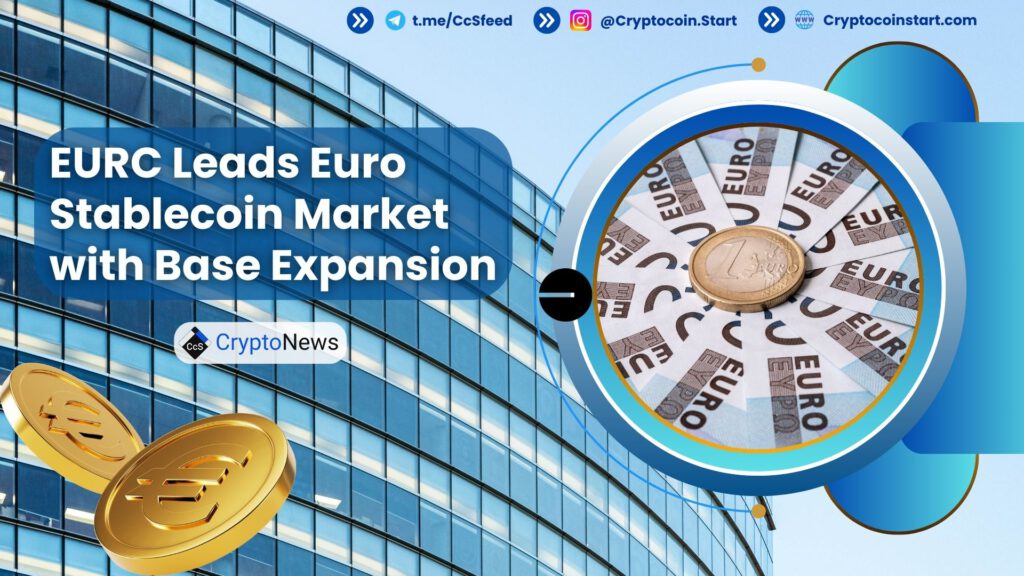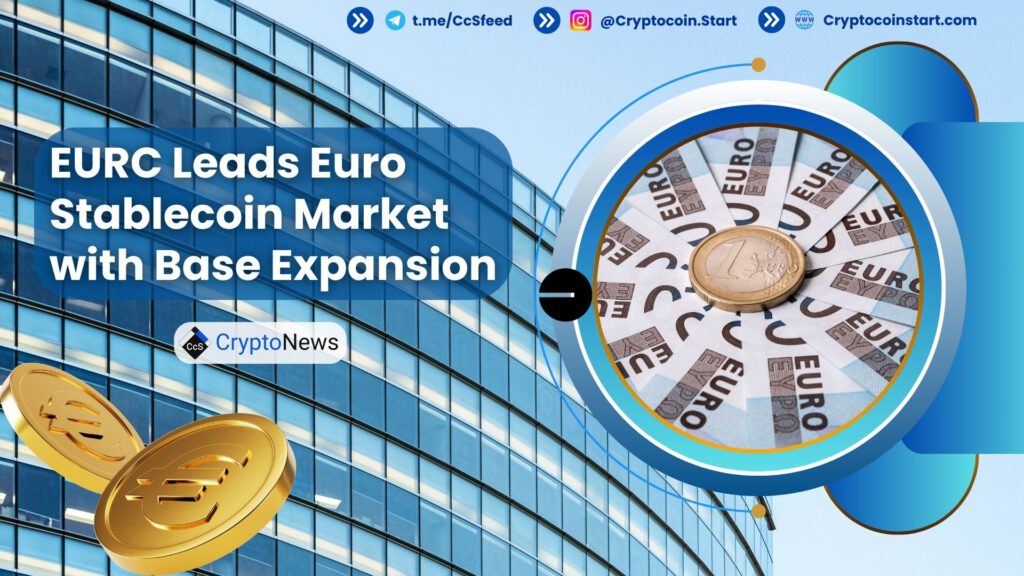
EURC Gains Ground in Euro-Based Stablecoin Market
The Euro has largely been a forgotten currency in the heavily dollarized stablecoin space. As a less intuitive asset, tokenized Euro lagged behind. However, Circle’s EURC is now pushing for aggressive expansion, more than doubling its supply since August.
EURC Becomes the Most Widely Circulated Euro Stablecoin
EURC is now the most widely circulated Euro-based stablecoin, following two months of supply expansion. The supply of EURC has returned to levels not seen since 2022, growing from $36 million in market capitalization to above $75 million. The circulating supply is currently 67.9 million tokens, with most of the recent growth happening on the Base chain.
EURC has also displaced Celo’s cEUR, which has seen its supply contract due to low demand. The Euro-based asset currently trades at a slight premium, at 1.12 USDC per coin, compared to the exchange rate of $1.11 per Euro. EURC is available on centralized exchanges like Binance and Coinbase.
EURC Boosted by Decentralized Swaps
Circle launched EURC in July, aiming to populate Base with another transparent, fiat-backed asset. Circle followed up by printing USDC on Base, providing liquidity for the chain’s emerging DeFi applications. As of September, EURC has been highly active on the Aerodrome Slipstream pair, a high-throughput DeFi trading mechanism that provides extra liquidity within a predetermined price range.
Currently, more than 62% of all EURC activity is concentrated on a single Aerodrome DEX pair. Aerodrome is one of the main drivers of growth for both USDC and EURC, with its total value locked rising to $1.114 billion. Both USDC and EURC are designed with decentralized applications in mind and are compatible with most lending and trading protocols.
EURC Use Cases and Compatibility
EURC trades against USDT and provides another tool for moving to and from DeFi protocols. It has experimental mints on Polygon and Solana, as well as less widely used chains like Stellar, Avalanche, and Internet Computer (ICP). EURC is fully programmable and bridge-compatible, enabling cross-chain transactions.
EURC as an Onboarding Tool for Euro Traders
Euro-based stablecoins remained relatively rare in 2024, as Euro area traders could rely on fiat or dollar-based prices. However, EURC serves as a fully compliant onboarding tool, particularly for Base users. On Coinbase, Euro users can swap EURC without commission. The EURC/USDT pair also aims to facilitate on-chain forex trading.
EURC Token Distribution
The number of EURC holders remains relatively small, with around 3,500 holders on the Ethereum blockchain. On Ethereum, most of the EURC token supply is held by whales or protocols, with few wallet-to-wallet payments or small-scale holdings. On Base, EURC has around 2,222 holders, with a significant portion of the supply locked in protocols like Morpho or in liquidity pools and passive income vaults.
- More than 49% of the EURC supply circulates on Ethereum.
- Approximately 42% of the supply is on Base, following a period of active minting.
EURC still lags behind USDC, which has a supply of 3.98 billion tokens on Base, with Ethereum being the primary chain, carrying more than 67% of the minted tokens.
EURC’s Growth and Regulatory Compliance
Since July 2024, EURC has gained importance and may potentially replace other types of stablecoins. The asset is fully compatible with the Markets in Crypto-Asset Regulation (MiCA) due to its backing with fiat assets. Circle has also obtained an Electronic Money Institution (EMI) license in France and is working with Euro Area banks as reserve holders.
Business Adoption and Reserves
EURC is also targeted at businesses, which can access Circle Mint, a facility for swapping EUR into tokens and vice versa. As of September 26, EURC reported reserves of $60.9 million, exceeding the 60.1 million tokens in circulation. In the past month, new EURC issues slightly outpaced redemptions, resulting in a net growth of 7.3 million tokens. In contrast, USDC expanded its supply by 1.9 billion tokens in September.
Both EURC and USDC are partially backed by reserves held in banks and the Circle Reserve Fund, which comprises a mix of cash and short-term US Treasury Bills. This backing mechanism ensures that EURC meets MiCA requirements. Unlike USDT, which is backed by US T-Bills but lacks banking counterparties in the Euro Area, EURC offers a more compliant and transparent option for Euro-based users.


